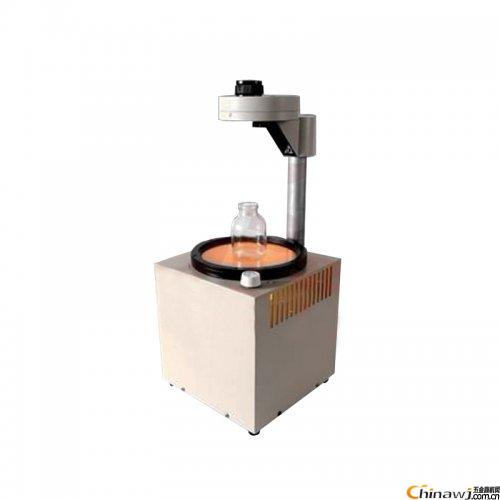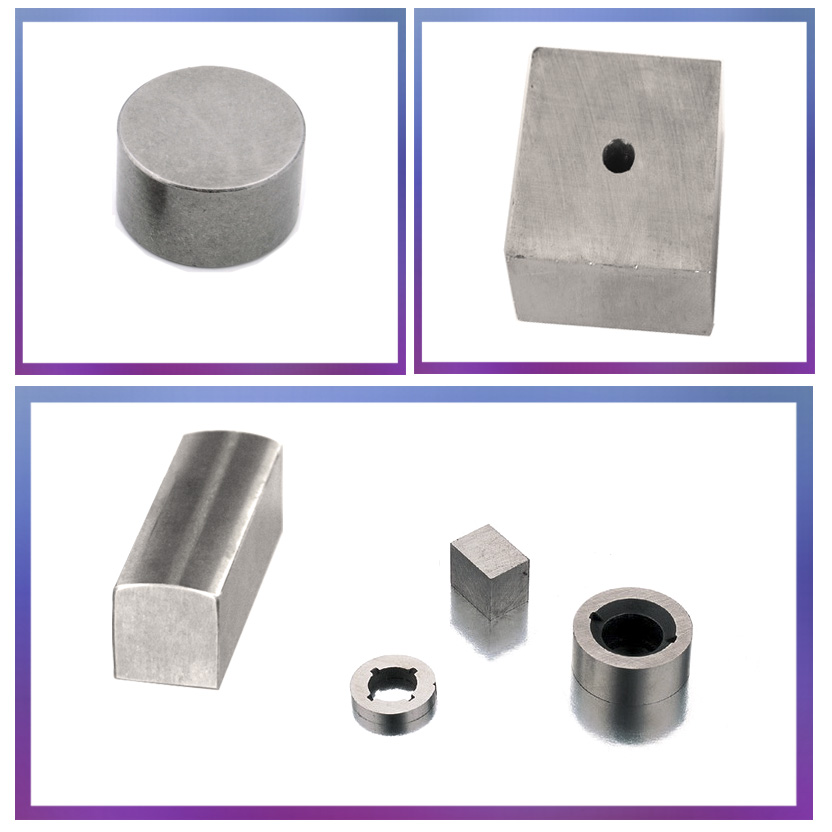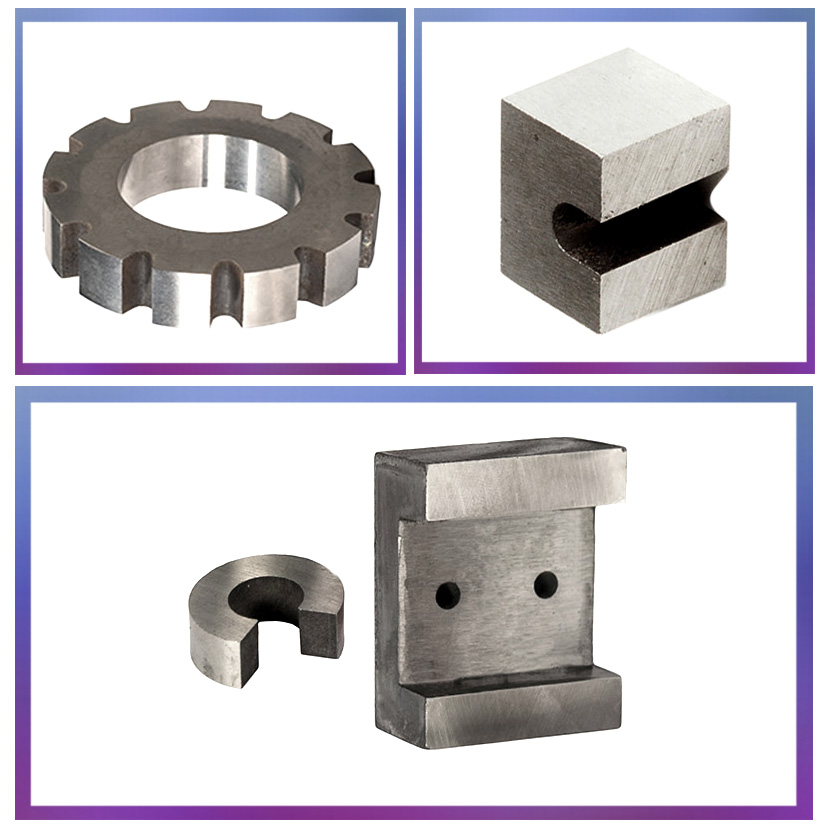Usually glass is an isotropic homogeneous material that exhibits anisotropy when stress is present, producing a birefringence of light. This Law specifies a method for measuring the birefringence optical path difference using a polarization stress meter and expressing the internal stress of the product by the optical path difference value per unit thickness.
Alnico is an alloy of Aluminium, Nickel and Cobalt.It also contains Iron , Copper ,Titanium, Different metal
component constitution will form different magnet properties, application will also change accordingly.
Alnico is produced by sintered or casted technique,Its`surfaces may need machining,or to be ground for a smoother surface finish and looks brightly metallic looking. Casting means can producing AlNiCo forvariety sizes and shapes, Sintered Alnico is subsize and have very tiny tolorance but machanical performance is not good.
The most commonly used Alnico is Alnico5. There are 4 sort of cast Alnico5 plus a singlesort of sintered Alnico5 (sintered Alnico and cast Alnico have slightly different magnetic and mechanical performance). Among the permanent magnetic materials, AlNiCo have the best reversible temperature coefficient, the highest working temperature up to 500 ℃,it has the
hardest and toughest strongness.Most ALNICO Magnet grades are anisotropic (axial / vertical direction add magnetization).The others are isotropic(horizontal direction magnetized and usually have many poles on one magnet) they are weaker on magnetism but offer more options on design and properties.
Glass bottle internal stress tester test method
There are many glass bottle products in life, which are widely used in many fields such as food, medicine and cosmetics. We mainly introduce the measurement method of internal stress of medicinal glass containers. The internal stress refers to the internal force of the interaction between the various parts of the object when the object is deformed due to external factors (force, temperature, humidity change, etc.) to resist the external cause and try to make the object deformed. The position is restored to the position before the deformation. The internal force per unit area at a point of the section examined is called stress. Because glass products are affected by external influences, internal stress will be generated. If the internal stress is too large, the glass products are easily affected by external influences, which will not only cause damage to the users but also waste the drugs themselves. Therefore, it is necessary to control the internal stress of the glass products. Within the scope. How to test the internal stress of the medicinal glass container, what kind of equipment is used for testing, this is what we specifically explain.
Usually glass is an isotropic homogeneous material that exhibits anisotropy when stress is present, producing a birefringence of light. This Law specifies a method for measuring the birefringence optical path difference using a polarization stress meter and expressing the internal stress of the product by the optical path difference value per unit thickness.
1. Instrumentation
Equipment for testing stress in glass containers: YLY-02 polarized stress meter and CHY-B glass bottle thickness gauge
The YLY-02 polarized stress gauge selected for the test shall meet the following technical requirements:
1. When using a polarizing element and a protective member for observation, the brightness of the edge of the light field is not less than 120 cd/m2.
2. The polarizing element used should ensure that the polarization is not less than 99% at any point in the bright field.
3. The polarization field is not less than 85 mm.
4. A 565 nm full-wave plate (sensitive color film) and a quarter-wave plate can be placed between the polarizer and the analyzer. The slow axis of the waveplate is 90o from the plane of polarization of the polarizer.
5. The analyzer should be mounted so that it can rotate relative to the polarizer and the full wave plate or quarter wave plate, and has a measuring device with a rotation angle (the dial value is 1o).
2. Test method
The test product shall be a product that has not been tested after annealing. It must be placed in the laboratory for more than 30 minutes under temperature conditions. Wear gloves when measuring. Avoid direct contact with the test article by hand.
(1) Inspection of colorless test articles
1. Inspection of the bottom of the colorless test sample: Place the quarter wave plate into the field of view and adjust the zero point of the polarization stress meter to make it a dark field.
2. Put the test sample into the field of view and observe the bottom from the mouth. At this time, a dark cross will appear in the field of view. If the stress of the test piece is small, the dark cross will be blurred. Rotate the analyzer to separate the dark cross into two arcs moving in opposite directions. As the dark area moves outward, blue-gray appears on the concave side of the arc, and the convex side appears brown. If the stress value at a selected point is determined, the analyzer is rotated until the point where the blue-gray is just replaced by a brown color. Rotate the test piece around the axis to find the maximum stress point, rotate the analyzer until the blue-gray is replaced by brown, record the angle of rotation of the analyzer at this time, and measure the thickness of the point.
Inspection of the side wall of the colorless test article: Place the quarter wave plate into the field of view and adjust the zero point of the polarization stress meter to make it a dark field of view. Put the test piece into the field of view so that the axis of the test piece is 45o from the plane of polarization, and the bright and dark areas appear on the side wall. Rotate the analyzer until the dark areas on the side walls meet, just replacing the bright area completely. Rotate the test piece around the axis to determine the maximum stress zone. The angle of the analyzer in the measured maximum stress region was recorded, and the original thickness of the two side walls (the sum of the wall thicknesses of the two side walls) was measured using a CHY-B glass bottle thickness gauge.
(2) Inspection of colored test articles
The inspection procedure is the same as (1). When there is no obvious blue and brown and the glass transmittance is low, it is difficult to determine the rotation end point of the analyzer. The dark test is especially serious. At this time, the average method can be used to determine the accurate end point. That is, the dark area is substituted for the average of the rotation angle of the bright area and the total rotation angle of the bright area just reappears.
Result calculation
δ = T / t = θ × 3.14 / t
Where: δ - the stress of the test piece, nm / mm;
T - the optical path difference of the part to be tested, nm;
t —— the total thickness of the light passing through the tested part, mm;
θ - the angle of rotation of the analyzer (when the maximum stress is measured);
3.14 —— The constant when using a white light source (effective wavelength is about 565 nm), the rotation of the analyzer by 1o is equivalent to an optical path difference of 3.14 nm (T = θ × 3.14).
Through the above methods, the internal stress of the medicinal glass container is measured. If the stress value is found to be too large, effective measures can be taken to eliminate or reduce the stress in time. We also hope that the relevant production enterprises and users will put the quality and safety issues first. The YLY-02 polarized light gauge and CHY-B glass wall thickness gauge produced by Jinan Sanquan Zhongshi Experimental Instrument Co., Ltd. have been applied in many pharmaceutical packaging plants and pharmaceutical companies. We sincerely look forward to more colleagues. Zhishi and our company carry out technical exchanges and discussions.
For details, please call: Chen Meiru 0531-6781 3036 156 6677 5359
Http://news.chinawj.com.cn  Editor: (Hardware Business Network Information Center) http://news.chinawj.com.cn
Editor: (Hardware Business Network Information Center) http://news.chinawj.com.cn 


ALNICO Magnet
ALNICO Magnet,Cast ALNICO Magnet,ALNICO 8 Magnet,ALNICO 5 Magnet
NINGBO SHINE MAGENETIC TECHNOLOGY CO.,LTD , https://www.shinemagnets.com